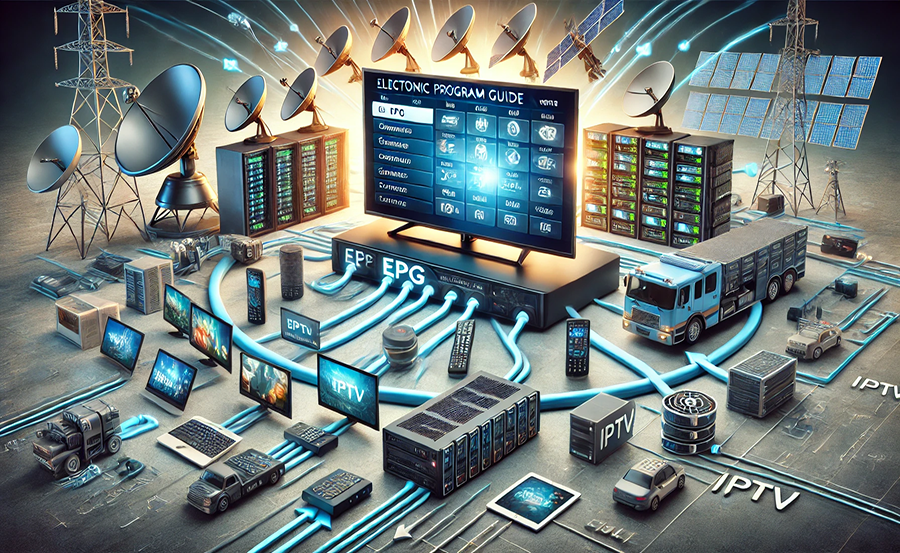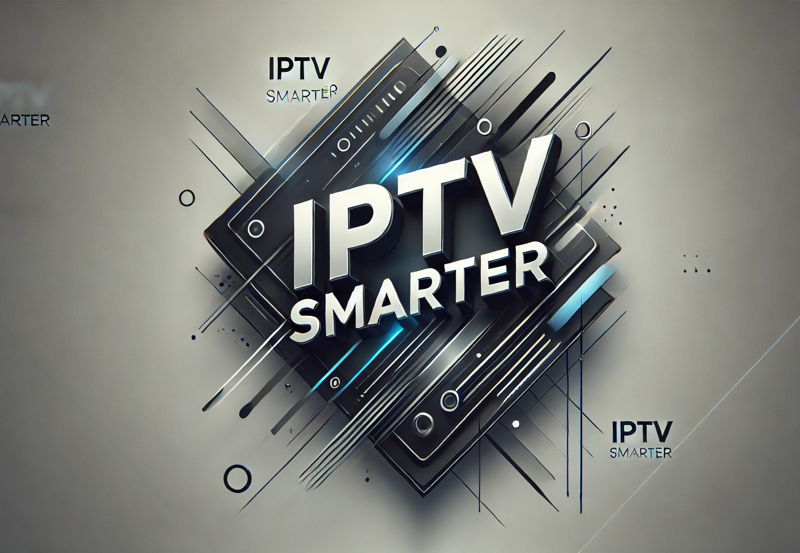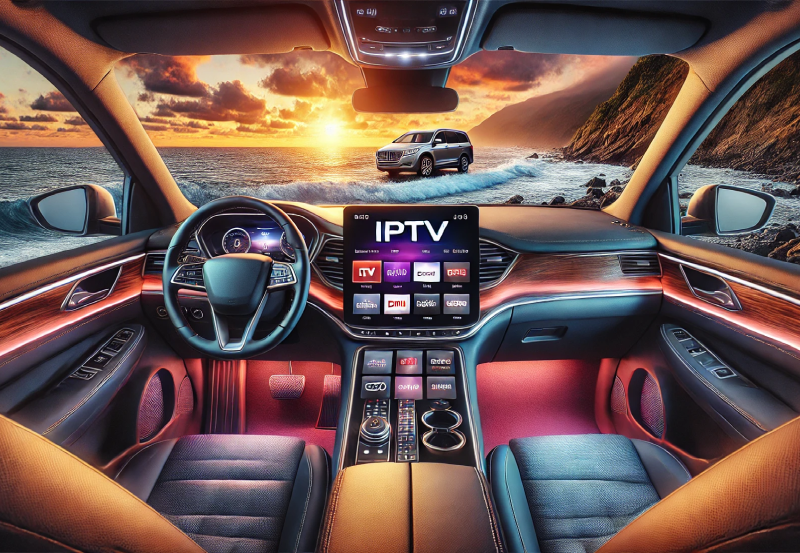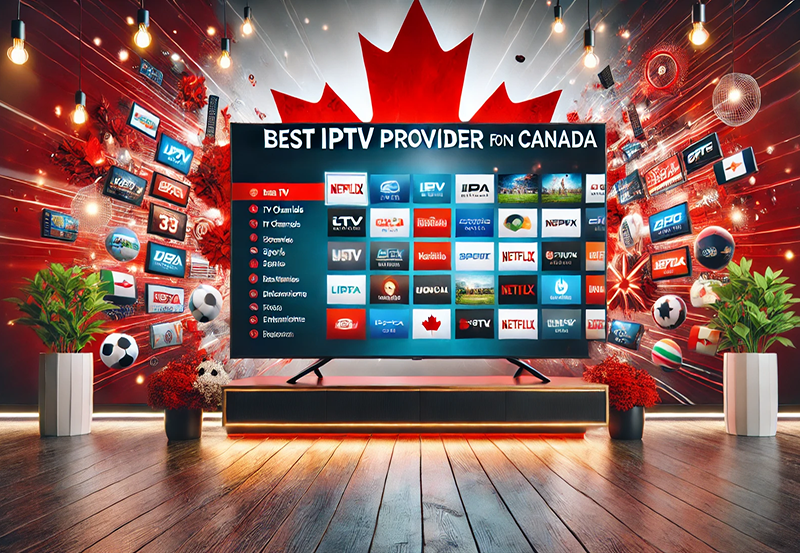Electronics in the modern era have deeply changed the way we consume media. One of the technologies playing a crucial role in this transformation is the Electronic Program Guide (EPG). As you navigate through countless TV channels or explore the best IPTV for sports, you might have come across an interface presenting you with show schedules and other broadcast details. This interface is none other than the EPG. But what exactly is this seemingly simple yet pivotal feature? Let’s explore!
The Evolution of Electronic Program Guides
Once upon a time, channel surfing was a manual task—a tedious affair of flipping through channels, often with little guidance. Fast forward to today, and the EPG has revolutionized this experience. Emerging mostly with the advent of digital television, EPGs have changed from being a basic listing to a sophisticated tool.
Initially, EPGs mirrored the printed TV guides, showing only the schedule. However, as technology advanced, so did the functionality of EPGs. Viewers can now search, filter, and receive recommendations. These enhancements have been especially beneficial for those interested in finding the top IPTV services.
Why the EPG Was Needed
The complexity and expansion of TV channels created a necessity for viewers to have a streamlined method of navigation. With hundreds of channels available, particularly through IPTV, finding a specific program could become an ordeal. The EPG was developed to tackle this exact challenge, giving users the ability to not just see what’s on but to plan their viewing.
This guide is particularly valuable for sports enthusiasts seeking out the best IPTV for sports, as it allows them to catch live events in real-time without hassle. It’s not just a matter of ease—it’s a way to ensure you never miss a winning moment.
The Role of EPG in Modern Viewing
The EPG has become essential, almost like a personal assistant for your viewing habits. It’s more than just a scroll-through; it’s interactive. Modern guides now even allow for functionalities like setting reminders, recording shows, and sometimes integrating with smart home devices.
- Ensures timely access to preferred content.
- Improves user engagement with interactive features.
- Facilitates a tailored viewing experience for fans of niche content.
How EPG Works Behind the Scenes
While the user experience with EPG seems straightforward, its backend is a complex blend of data and technology. EPG data is typically transmitted by broadcasters in a standard format. This data includes program titles, descriptions, ratings, and more. Broadcasters regularly update this information, ensuring viewers have the latest schedules at their fingertips.
The Data Sources
The primary data source for most EPGs is the television network or broadcaster itself. This data is often complemented by third-party listings or databases that specialize in the accurate and timely provision of broadcast schedules. Such integrations allow IPTV services to elevate your IPTV viewing journey by offering comprehensive data not just on what’s on, but also what’s trending.
Interestingly, some platforms employ AI to predict viewer preferences, using past viewing habits to suggest new programs or channels.
Integration with Different Devices
EPGs need to work seamlessly across multiple devices. Whether you access it via a traditional TV set, through IPTV apps, or on a smartphone, the core EPG functions remain intact. This cross-device functionality requires robust technological infrastructure capable of adapting data for various interfaces.
Service providers invest heavily in making EPG adaptable, knowing its role is critical in retaining users—especially in the competitive IPTV market where top IPTV services are constantly vying for viewer attention.
Understanding EPG Features
The EPG experience is characterized by its numerous features which vary across platforms but generally aim to enhance user interaction and personalization.
Basic Features
Even in its most stripped-down form, an EPG provides a clear, chronological view of upcoming programs. It includes start and end times, program names, and basic details like episode numbers for series.
This fundamental setup is essential for every kind of user, whether they’re searching for a documentary, the best IPTV for sports, or a late-night movie.
Advanced Features
Sophisticated EPGs allow for more than just viewing schedules. They involve capabilities such as setting reminders for upcoming shows, direct recording options for compatible devices, and interactive content such as live voting in reality shows.
For those invested in DVR (Digital Video Recorder) systems, the synchronization with EPG can mean seamless content grabbing. This feature set distinguishes premium from standard IPTV services.
Personalization and Recommendations
Beyond basic navigation, modern EPGs include algorithms that learn from viewing habits. They suggest content you might like, helping you to discover shows you might have overlooked. It’s a treasure trove for those eager to elevate their IPTV viewing journey by continually discovering fresh content tailored to their tastes.
Even simple features like color coding different genres can make a significant impact on user experience, offering an enhanced level of interaction and personalization.
Challenges in EPG Development
While incredibly useful, developing a reliable EPG is not without its hurdles. From ensuring data accuracy to maintaining seamless updates, there are multiple challenges faced by service providers.
Data Accuracy and Reliability
Keeping the EPG relevant and accurate is a constant struggle. With frequent changes in programming, sometimes last-minute, ensuring the data is always up-to-date requires robust systems. Failure in this area can lead viewers to miss shows, resulting in dissatisfaction.
Top IPTV providers invest in sophisticated technologies and partnerships to prevent such issues, reinforcing their position as providers of choice within a competitive landscape.
User Interface Design
The design of an EPG must balance information provision with ease of use. A cluttered guide might frustrate users, while an overly simplistic one might lack necessary details. Designers and developers strive to create interfaces that are both visually appealing and functional, ensuring users of all ages can access content without a steep learning curve.
This aspect is particularly crucial when targeting audiences unfamiliar with digital interfaces, as it represents one of the most crucial touchpoints for user interaction.
Future Trends in EPG Technology
Looking forward, the EPG is expected to evolve beyond its current form, driven by technological advancements and changing consumer preferences. Predictive analytics, AI-driven personalization, and integration with other digital platforms are on the horizon, promising to further transform how content is consumed.
AI and Predictive Functionality
With AI, the EPG of the future might predict viewer preferences not just based on what has been watched, but by analyzing real-time data trends and moods. Imagine tuning into an IPTV service where your preferred sports channels start streaming recommendations seconds before you thought to search for them.
Such advancements could eliminate the need for manual browsing, offering a truly personalized viewing experience, which stands to redefine the best IPTV for sports users’ engagement.
Cross-Platform Integration
As users continue to access content across a myriad of platforms, EPGs that seamlessly integrate across these channels will become increasingly valuable. Expect future guides to sync with smart devices, even perhaps integrating with virtual assistants, ensuring a cohesive viewing journey.
The concept of a unified experience, regardless of device or platform, is one that is rapidly gaining traction and will likely be a significant trend in EPG’s future evolution.
A Few Words at the End
Reflecting on the journey of EPGs, it’s clear that they are a dynamic, ever-evolving component of the entertainment technology landscape. The innovative touch they bring to media consumption can’t be overstated. As technology continues its march forward, we can only expect EPGs to become more central in our viewing experiences, from finding the top IPTV services to personalizing digital content to our hearts’ content.
As a staple of digital media, the EPG stands as a testament to how far we’ve come—but also a hint at the yet untapped potential of what our future viewing experiences might be like.
FAQ Section

- What is an Electronic Program Guide (EPG)?
- An EPG is a digital listing of scheduled broadcast content available on TV and IPTV services, providing information like program title, start and end times, and summaries.
- How does the EPG enhance my IPTV experience?
- EPGs help users easily navigate through content, set reminders, and even record shows. This organization is crucial for users interested in quickly finding sports, movies, or shows they want to watch.
- Are there different types of EPGs across services?
- Yes, the features of an EPG can vary widely between different providers and services, particularly in terms of interface design and additional functionalities like recommendations and DVR integration.
- Why should I care about the EPG functionality when choosing IPTV services?
- The EPG can significantly enhance your viewing experience by making content accessible and easy to organize. It’s an important feature to consider when selecting among the top IPTV services.
- Can EPGs predict what I want to watch?
- Advanced EPGs use algorithms to suggest content based on your previous viewing habits, and increasingly, artificial intelligence is being incorporated to enhance these predictive capabilities.
The Best Parental Controls on Roku Devices for 2024





